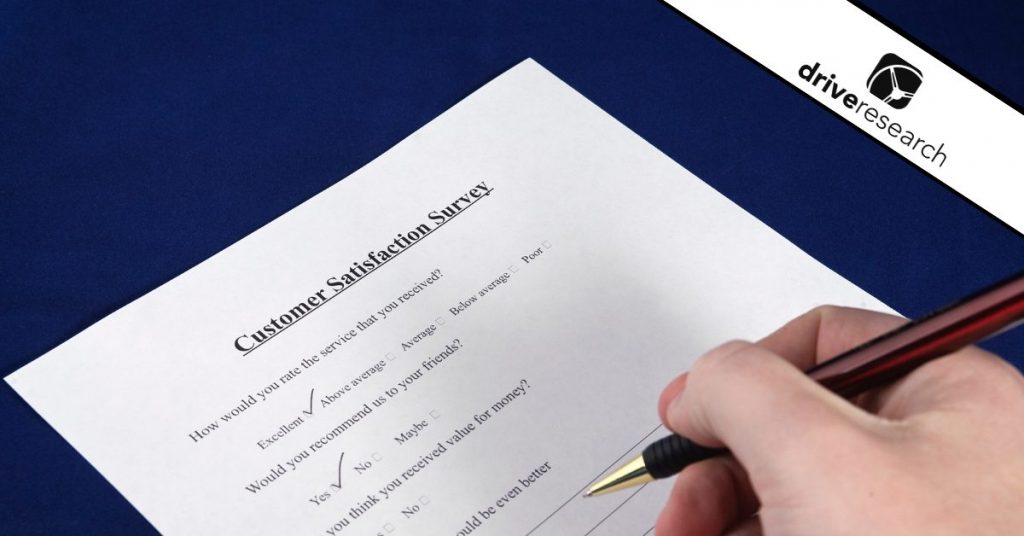
You are familiar with writers block correct? But what about survey writers block? It happens to the best of us, especially if you are new to writing surveys and you are not sure where to start. In our minds, it’s an art form that takes a lot of practice to master. So if you are wondering “how to write a survey”, we think you came to the right market research blog.
Survey design is more than just writing questions and answers. It’s understanding the perspective of the respondent and how they feel when taking your survey. Higher respondent engagement means better data which means more useful end results. We’re all about perspective. It’s 1 of our 4 core values at our market research firm.
To set yourself up for success we developed 4 survey writing tips, which is arguably a critical piece to survey engagement. It’d be hard to take a survey that is difficult to follow and the questions seem all over the place, right? You would be exiting that survey as fast as possible.
Below are 4 survey flow tips when drafting up a survey.
Tip 1: Start with qualifying questions
Many surveys will be created with qualifying questions peppered throughout the survey. My question to all of those survey writers is, is it necessary to waste respondents time answering questions if you are planning to filter them out anyways? Probably not, get to those qualifying questions immediately.
Surveys should start with qualifying questions. For example, if you’re searching for females, within a specific geography, who are the decisions makers (or share decision making) in their household, ask those three questions upfront. If they disqualify you are not wasting their time.
Tip 2: Move to general questions
After respondents have passed through the qualifying questions, it’s time to get down to business but be careful. You don’t want to go straight into the core questions of the market research study just yet. Why? You have to warm-up the respondent a bit and get them comfortable with the topic, answering questions, so they are firing on all cylinders when the main questions arrive.
Oftentimes, after the qualifying questions have been asked, surveys will then move into general questions such as, “What is the first word or phase that comes to mind when you see or hear Example Company?” or, “Have you heard of Example Product before?” “Which of these products do you use?”
This warms participants up by starting light and then getting more specific later in the survey script. Our market research firm uses this tactic on all surveys.
Tip 3: Time to get specific
Once the survey participants are qualified and ready, it’s time to get to those core questions which address your market research objectives. Core questions are custom questions based on key items the sponsoring client needs answered from the market research. These key questions are often the main focus of the kickoff meeting or proposal for the work.
Types of survey objectives range from understanding competition, customer satisfaction or Voice of Customer (VoC), customer experience (CX), feasibility of a new product or service.
The list could go on and on.
Start your survey with broad questions and then get more specific.
Tip 4: End with demographics
Save all demographic questions for last. This is a pretty simple one. The reason demographic questions are put at the end is because these questions are more personal and we want the respondent to feel comfortable sharing this information (household income, age, ZIP code, etc.) These are the most personal questions in your survey.
Another reason is that a lot of survey software collects partial completes, so core questions are more likely to be completed if there is drop off. So instead of the respondent bailing after they are asked household income early on, you are able to collect some key responses before they drop-out.
However, the best way to beat drop off is to create an engaging survey at the optimal length for respondents. Here’s more tips on improve survey response rates. Again, engaged respondents translates to higher quality and more accurate data.
Bonus Tip: Keep in mind…
Survey engagement is key, and it’s determined by more than just survey flow and design. There are a variety of factors to consider when creating a survey from the incentive used to the message sent to the target audience to the length of the survey. Our market research firm has explored all angles when it comes to survey engagement: what works and what doesn’t work.
A key aspect to survey writing is just that… the writing. When creating questions, think about ways to make the questions more fun and engaging by lightening the tone used or mixing up the ways questions look (scales, categories, etc.)
For example, instead of asking, “What is your year of birth?” Drive Research switches it up to, “What year were your born? Wow, time flies.” These little opportunities keep participants engaged and are strategically placed at different points of our survey at potential points of drop-off.
Another example could be to utilize more icons, like emojis and stars in rating scale questions. While this might seem like a small switch, giving a star rating or sliding a scale is way more fun than just checking a box.
Anyhow, we need to have fun writing these surveys right? If we have fun writing them we think that will translate to survey takers having fun filling them out.
Drop Us a Message
Drive Research is a market research firm. Are you looking for more online survey services or other market research services? We’ve got you covered.
Contact our team at [email protected] or get a quote with us using the button below.



